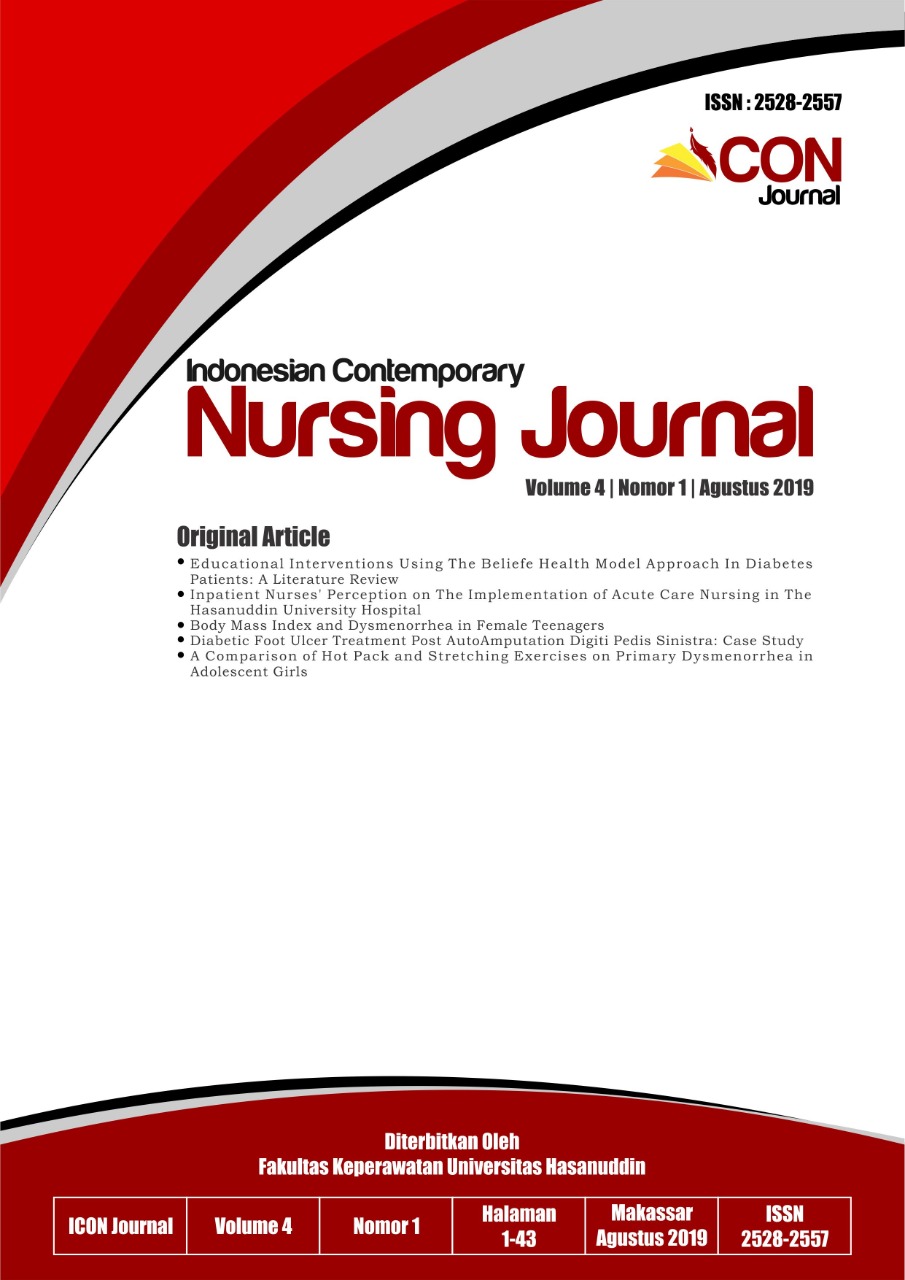Body Mass Index and Dysmenorrhea in Female Teenagers
DOI:
https://doi.org/10.20956/icon.v4i1.6705Keywords:
Adolescent, Body Mass Index, DysmenorrheaAbstract
Dysmenorrhea is a problem experienced by more than 50% of women in each country. Pain occurs in the lower abdomen, sometimes accompanied by nausea, vomiting, dizziness and mood changes. This condition causes an increase in absenteeism in school, disruption in learning activities that affects achievements in academic and nonacademic fields. One factor that is often associated with the incidence of dysmenorrhea is an abnormal body mass index (overweight and underweight). This study aims to determine the relationship of body mass index with the degree of pain menstruation (dysmenorrhea) in young women in SMA Negeri 21 Makassar. This research is a descriptive cross-sectional study involving 110 respondents based on the purposive sampling method and carried out in February-March 2019. The data taken is primary data through measurements of body mass index based on body weight and height. After that, a normal, overweight and underweight grouping is done. Measurement of menstrual pain level is done using Visual Analog Scale (VAS). Data analysis was performed using Chi square test and the value of p = 0.00 was obtained. From this results, significant conclusions can be drawn because the value of p < 0.05 indicates that there is a significant relationship between body mass index and degree of menstrual pain (dysmenorrhoea) in young women in SMA Negeri 21 Makassar.
Keywords: Dysmenorrhea, Body Mass Index, Adolescent
Downloads
Published
How to Cite
Issue
Section
License
Authors who publish with this journal agree to the following terms:Authors retain copyright and grant the journal right of first publication with the work simultaneously licensed under a Creative Commons Attribution License that allows others to share the work with an acknowledgement of the work's authorship and initial publication in this journal.
Authors are able to enter into separate, additional contractual arrangements for the non-exclusive distribution of the journal's published version of the work (e.g., post it to an institutional repository or publish it in a book), with an acknowledgement of its initial publication in this journal.
Authors are permitted and encouraged to post their work online (e.g., in institutional repositories or on their website) prior to and during the submission process, as it can lead to productive exchanges, as well as earlier and greater citation of published work (See The Effect of Open Access).



